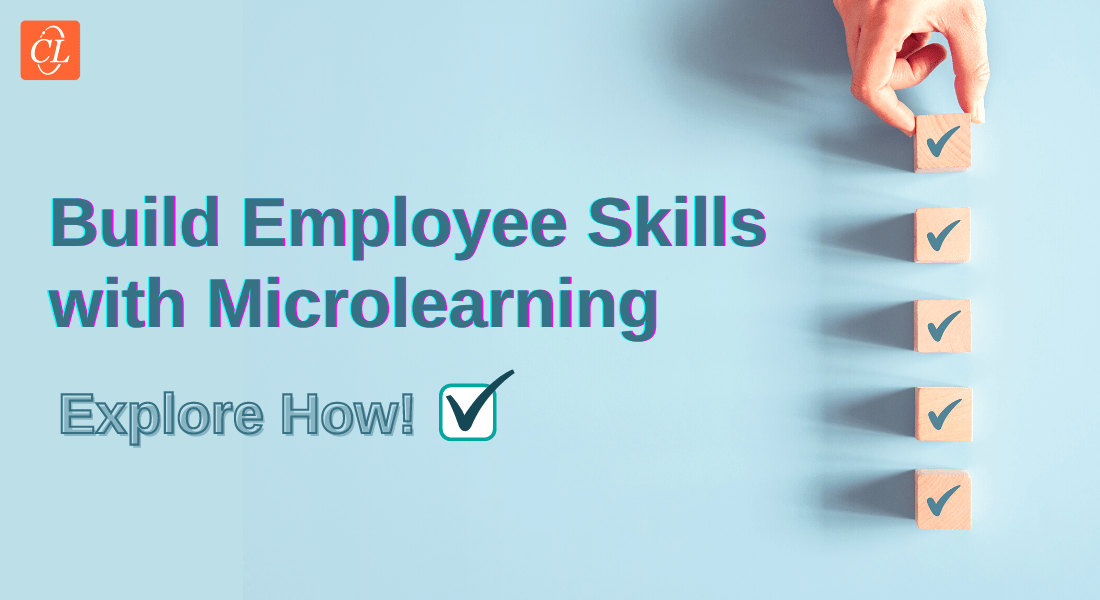How Does Microlearning Add Value to Corporate Training?
Are you contemplating the idea of implementing microlearning in your organization? Well, microlearning is here to stay and is slowly becoming the hot favorite of corporate L&D gurus. Read on to explore how microlearning adds value to corporate training.

As L&D professionals, we are often involved in brainstorming sessions at the workplace to understand which learning solution work best for a client. What works for one client may not necessarily work for another. Often during such discussions, I find myself thinking, “Why didn’t I think of such a simple solution?” Probably it’s human nature to go in for the more complex solutions rather than a simple one. Are there simple solutions to address an organization’s training needs? Of course! That’s where microlearning training can help.
How Does Microlearning Training Help Organizations?
Here are the top 3 reasons to say yes to microlearning:
- Aligns with Desired Organizational Results
- Translates to Desired Employee Performance
- Focuses on One Performance-based Objective
Microlearning is usually designed to address the following client needs:
- Implement a simple and quick training solution
- Increase the impact of training
- Drive and sustain employee performance
Can microlearning actually add value to organizational training? If you are thinking of implementing a microlearning solution, this is a question that would have certainly crossed your mind. Read this blog post to know more.
Why go for Microlearning for Corporate Training?
1. Aligns with Desired Organizational Results
A long winding training program can sometimes lose track of the final goal. With microlearning, it’s easier to align the training with the desired organizational result. This is because, with microlearning you are focusing on one objective at a time. This does not mean that microlearning will work for any training need of the organization. It depends on the training need and the kind of content that needs to be covered in the training.
One of our clients from the food industry identified the need to improve their employees’ knowledge on food safety procedures. Not following food safety procedures could cost the company millions, in addition to damage to brand image. The client wanted training that is short, yet effective and can be accessed by learners on their mobile devices. Our “upbeat and catchy” challenge-based microlearning modules helped the company successfully train its employees on the basics of food safety.
Before you embark on a microlearning solution, try and understand how it can be aligned to yield the desired organizational results. Ask yourself:
- How will a microlearning solution help my organization?
- Which are the organization results that can be driven through microlearning?
- What are the key performance indicators (KPIs) or metrics that are relevant?
When you know what’s important for your organization and the results you would like to achieve from the training, the microlearning module can focus on delivering the desired organizational results.
2. Translates to Desired Employee Performance
Now that you have defined which organizational need is to be met through microlearning training the next step is to define the desired employee performance. What do your employees need to do, in order to achieve the desired organizational result? If you can capture information on what top performers in your organization do, you can share that with other employees through a simple microlearning module.
Let’s say you already have a classroom training program in place to train employees on effective sales skills. How do you ensure this learning translates into desired employee performance? Through a microlearning asset such as a sales simulation, learners get a chance to apply the sales skills learned in the classroom. For training to translate into desired employee performance, constant reinforcement is necessary. And microlearning can help with that.
→ Download eBook: Mobile Learning — Why is it the Right Choice for Performance Support?
3. Focuses on One Performance-based Objective
Legacy courses were designed to address different topics within a particular subject. This is very different from a microlearning session that addresses only one performance-based objective at a time. Microlearning covers one concept in detail, and is presented in a format that appeals to learners in this digital age. The following questions can help ensure that microlearning training is focused on one learning objective.
- Which task is critical for learners to improve their performance?
- How frequently are learners expected to perform this task, and how difficult is it to learn?
For instance, our microlearning module on food safety was expected to bring about a change in employees’ attitude toward food safety procedures. Learners are expected to practice these procedures regularly in the workplace. This means that training needs to be reinforced continually, and microlearning is like a power packed capsule for reinforcement of training.
Training modern workforces who are constantly on-the-move, with very little time to dedicate to learning is a challenge L&D professionals face. Microlearning training can prove to be a very effective strategy to engage your learners and improve learning outcomes for your organization.
Wrapping it up!
It’s indeed amazing that a short training module that lasts only a few minutes can have such a high impact on organizational training. If you haven’t already implemented microlearning in your organization, it’s time you give this training strategy some serious thought.
Don’t miss the insights shared in this handy guide to figure out where microlearning fits in your learning strategy. Grab your copy now and give your corporate training a microlearning makeover.
Editor’s note: This post was originally published in 2018 and has been updated for comprehensiveness.





